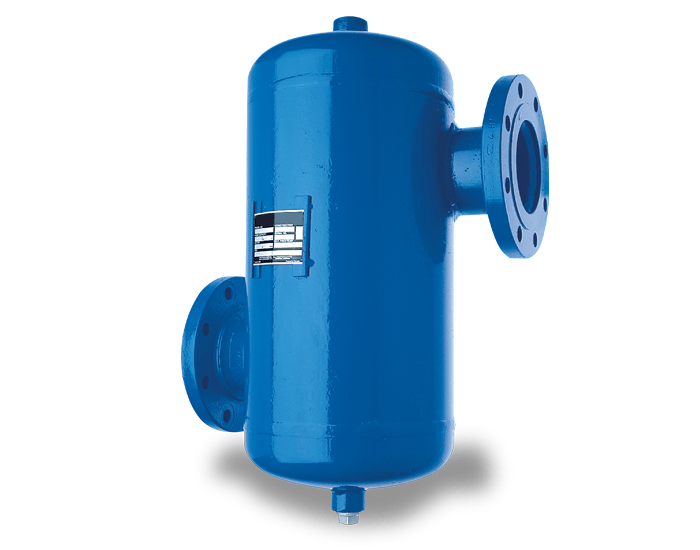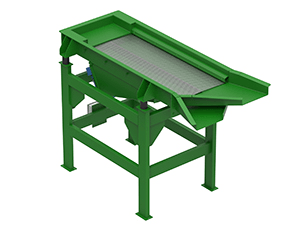Separators, Classifiers, and Screeners Information
 Screeners, classifiers, shakers, and separators are used for classification of powders or other bulk materials. Classification is done by particle size, density, magnetic properties, or electrical characteristics. Round and rectangular screeners, magnetic separators, electrostatic separators, rotary sifters, wet or concentrating tables, rake classifiers, classifying hydrocyclones, floatation systems and trommels are included in the category.
Screeners, classifiers, shakers, and separators are used for classification of powders or other bulk materials. Classification is done by particle size, density, magnetic properties, or electrical characteristics. Round and rectangular screeners, magnetic separators, electrostatic separators, rotary sifters, wet or concentrating tables, rake classifiers, classifying hydrocyclones, floatation systems and trommels are included in the category.
Types of Separators, Classifiers, and Screeners
Screeners are sifting units that are rotated as powder is fed into their interior. The finer particles fall through the sieve opening and oversized particles are ejected off the end. Rotary sifters or drum screeners are often used for deagglomerating or delumping type operations. Screeners are available in three main types: drum sifter, rectangular deck, and round deck.
Air classifiers use the spiral air flow action or acceleration within a chamber to separate or classify solid particles. Powders suspended in air or gas enter the cyclone and the heavier particles spiral out and down where they are collected. The air and finer particles flow up to the top where they may be passed to another cyclone with finer classification capability. A cyclone is essentially a settling chamber where the effects of gravity (acceleration) have been replaced with centrifugal acceleration.
Concentrating tables or density separators screen bulk materials or minerals based on the density (specific gravity), size and shape of the particles. This group includes jigging equipment, shaking table, spiral concentrators, concentrating or wet tables, or specialized settling vessels. Most concentrating or density separation equipment are hydraulic or water-based, although pneumatic or air-based systems are also available.
 Electrostatic separators use preferential ionization or charging of particles to separate conductors from dielectrics (nonconductors). The charged dielectric particles are attracted to an oppositely charged electrode and collected. The particles may be charged through contact electrification, conductive induction, or high tension (ion bombardment).
Electrostatic separators use preferential ionization or charging of particles to separate conductors from dielectrics (nonconductors). The charged dielectric particles are attracted to an oppositely charged electrode and collected. The particles may be charged through contact electrification, conductive induction, or high tension (ion bombardment).
Floatation systems separate hydrophobic particulates from hydrophilic particulates by passing fine air bubbles up through a solid-liquid mixture. The fine bubbles attach to and lift or float the hydrophobic particles up where they are collected.
Magnetic separators use powerful magnetic fields to separate iron, steel, ferrosilicon, or other ferromagnetic materials from non-magnetic bulk materials. The magnetic field may be generated by permanent magnets or electromagnets.
Rake, spiral, and bowl classifiers use mechanical action to dewater, deslime or separate coarse bulk materials from finer materials or liquids. Drag classifiers consist of a chain-link conveyor or endless belt that is dragged through a solid-liquid mixture. Rake classifiers lift solid-liquid mixtures up onto a plate with a screen or rake. Spiral classifiers use an Archimedes pump screw to lift solid-liquid mixtures up onto a screen for dewatering. Bowl classifiers, bowl desilters, hydroseparators or countercurrent classifiers are other types or mechanical classifiers.
Trommels are large rotary drum shaped with a grate-like surface with large openings. Trommels are used to separate very coarse materials from bulk materials such as coarse plastics from finer aluminum recycled material, coarse inorganic materials from organic wastes or large ore chunks from finer minerals.
Water classifiers such as elutriators and classifying hydrocyclones use settling or flow in water or a liquid to separate or classify powdered materials based on particle size or shape.
Specifications
Additional considerations for selecting a screener or separator are the application and the material processed. These devices play an important role in many application including those in the mining, pharmaceutical, powders, plastics, and feed and grain industries.
Standards
AICHE E-29 -- Methodology for conducting and interpreting performance evaluation tests on particle classification
Images credits:
Pentair | Cleveland Vibrator Company
- Alabama
- California
- Colorado
- Delaware
- Florida
- Georgia
- Iowa
- Idaho
- Illinois
- Indiana
- Kansas
- Kentucky
- Louisiana
- Massachusetts
- Maryland
- Maine
- Michigan
- Minnesota
- Missouri
- North Carolina
- Nebraska
- New Hampshire
- New Jersey
- New York
- Ohio
- Oklahoma
- Oregon
- Pennsylvania
- Rhode Island
- South Carolina
- Tennessee
- Texas
- Utah
- Virginia
- Washington
- Wisconsin
- Abrasives / Ceramics
- Air Classifier / Cyclone
- Air Jet
- Check Screening / Scalping
- Chemicals / Fertilizers
- Concentrating Table / Density Separator
- Construction Materials / Cement
- Deagglomerating / Sifting
- Dewatering / Washing / Desliming
- Dispersing
- Dry / Free Flowing Materials
- Electrostatic Separator
- Fines Removal / Dedusting
- Food Processing / Grain
- Grading
- Gyratory Action
- Lab / Pilot / Inspection
- Magnetic Separator
- Metallurgical / Foundry
- Mining / Ores / Minerals
- Paint Pigments / Adhesive Fillers
- Pharmaceutical / Cosmetics
- Polymers
- Power / Coal & Coke
- Production
- Sanitary
- Screener - Drum / Rotary Sifter
- Screener - Rectangular Deck
- Screener - Round Deck
- Spray Bar
- Static / Gravity
- Vibratory / Shaking Action
- Waste / Recycling
- Water / Hydraulic Classifier
- Wet / Bridging Materials
- Wood / Pulp and Paper
- hydrocyclone separator
- knock out drum
- sand separator
- sand sifter
- centrifugal separator
- gyratory shaker
- high efficiency cyclone
- 3 phase separator
- Steam Separator
- air cyclone
- dirt separator
- drum sieve
- refrigeration oil separator
- sand classifier
- vibratory sieve
- bed shaker
- coalescing oil separator
- drain separator
- droplet separator
- fmc screener
- gas wellhead separator
- inverted cyclone
- Membrane separator
- metal separators
- natural gas filter separator
- oil mist separator
- oilgas bulk separator
- rake classifier
- soil screener
- soil sifting equipment
